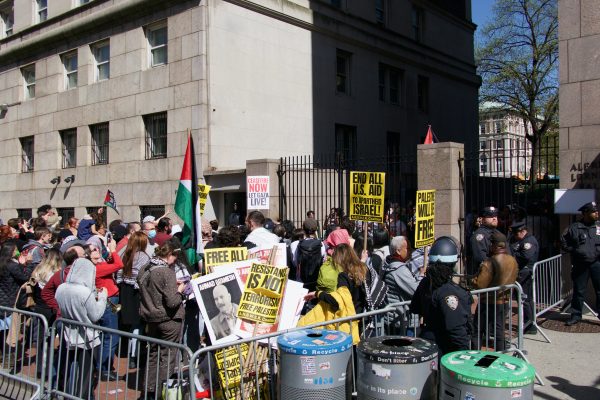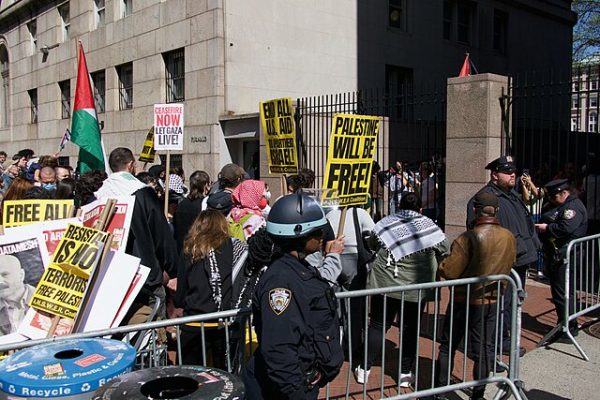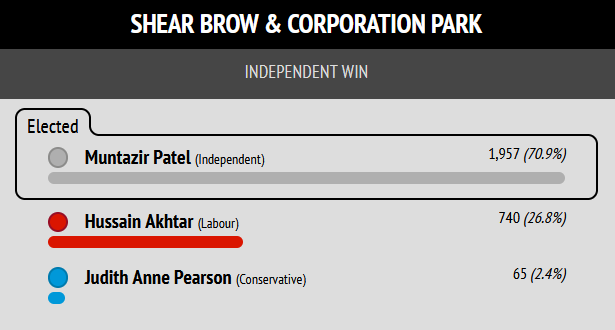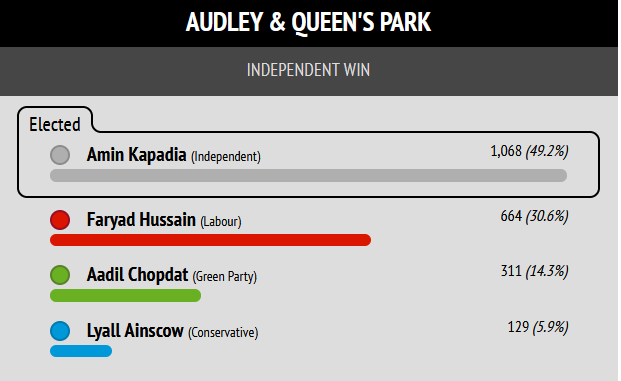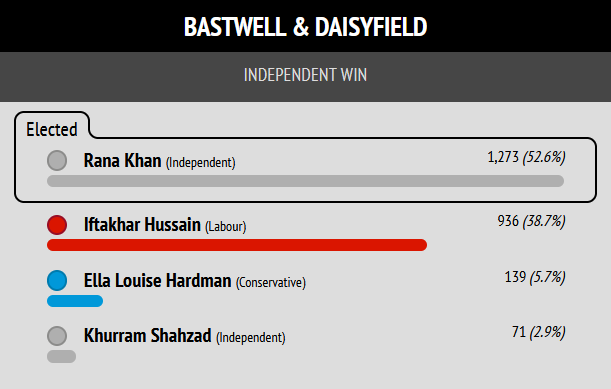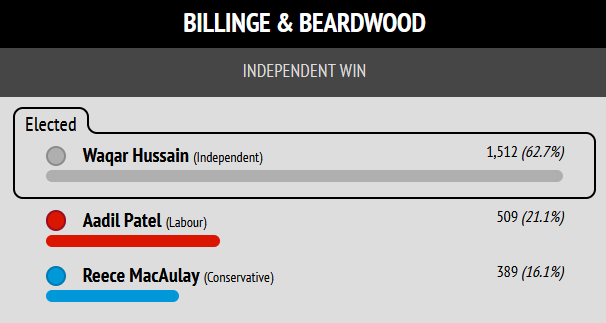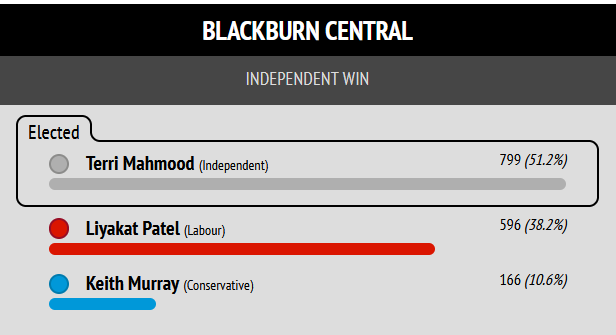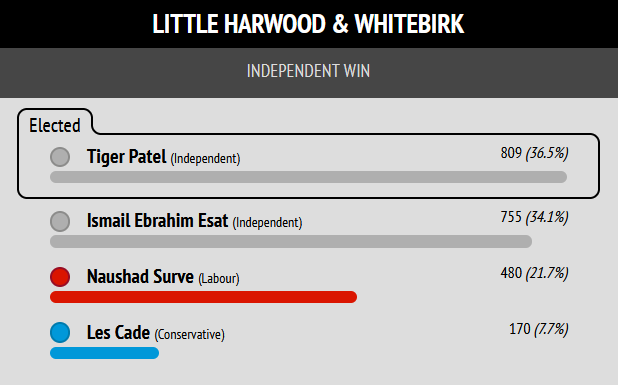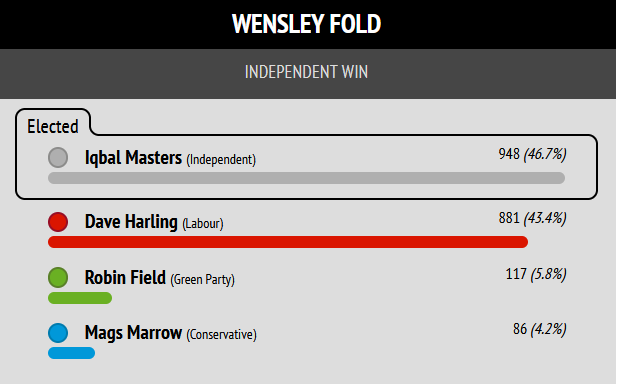| Introduction Since the spring of 1916 when Lenin wrote his pamphlet Imperialism, that work has been a focal point of discussion by both Marxists and non-Marxist political economists. Many critics have attempted to prove that Lenin’s analysis of contemporary capitalism is essentially incorrect; others that it is partially incorrect, but not outdated. Lenin’s “official” defenders in Moscow have tried to prove that every word written in 1916 is still totally valid today, while Marxists have taken into account the developments and changes of the last 50 years, modifying and adding to Lenin’s theory in the light of these changes. For the students of Lenin’s Imperialism, the two essays contained in this bulletin will serve as an introduction to the contemporary debate, indicating the questions which are being discussed and how they are being answered by both critics and defenders of the Marxist concept of imperialism. The author of the first article, E. Germain, is one of the leading theoreticians of the Fourth International and the author of numerous essays on Marxist economics. The Theory of Imperialism and Its Critics was a lecture originally given more than ten years ago to a group of Marxist students already familiar with Lenin’s Imperialism. After discussing the historical development of the theory, Germain goes on to deal briefly with the most important contemporary critics. Ernest Mandel, editor of the Belgian socialist weekly, La Gauche, and a leader of the Belgian Socialist Workers Confederation, is one of the world’s leading Marxist economists. His two volume Traité d’Economie Marxiste will soon be published in English by Monthly Review Press. The article reprinted here is a review of Michael Barratt Brown’s work After Imperialism, and first appeared in the June 1964 issue of the British periodical New Left Review. Mary-Alice Styron
July 1966 |
To Marxists, “imperialism” is not simply the “trend towards expansion” or the “conquest of foreign lands,” as it is defined by most political scientists and sociologists. The word is used in a much more precise sense to describe the general changes which occurred in the political, economic and social activity of the big bourgeoisie of the advanced capitalist countries, beginning in the last quarter of the 19th century. These changes were closely related to alterations in the basic structure of this bourgeoisie. Marx died too early to be able to analyze these changes. He did not see more than the preliminary signs. Nevertheless, he left some profound remarks in his last writings which later Marxists used as starting points for developing the theory of imperialism. In studying the rapid development of limited liability corporations, Marx underlined, in the Third Volume of Capital (chap.23), that these companies represent a new form of the expropriation of a mass of capitalists by a small handful of capitalists. In this expropriation the legal owner of capital loses his function as entrepreneur and abandons his role in the process of production and his position of command over the productive forces and the labor force. In fact, private property seems to be suppressed, says Marx elsewhere, it is suppressed not in favor of collective ownership but in favor of private ownership by a very small number. Concentration of Capital Marx foresaw the modern structure of capitalism as the final phase of capitalism resulting from the extreme concentration of capital. This was also the starting point taken by most Marxists, especially Hilferding and Lenin. In a paragraph devoted to countertendencies to the trend toward a falling rate of profit (Capital, Volume III, chap.14), Marx also underlined the importance of the export of capital to backward countries. A little further on he generalized this idea by insisting that a capitalist society must continuously extend its base, its area of exploitation. Engels added a more detailed elucidation to Marx’s comments. In his last writings, especially in his famous 1892 introduction to The Condition of the Working Class in England, he underlined other structural phenomena to which the theoreticians of imperialism attached great importance. Engels wrote that from the beginning of the industrial revolution until the 1870’s, England exercised practically an industrial monopoly over the world market. Thanks to that monopoly, in the second half of the 19th century, at the time of the rise of craft unions, English capitalism could grant important concessions to a section of the working class. But, towards the end of the 19th century the German, French, and American competition made inroads into this English monopoly, and inaugurated a period of sharp class struggle in Great Britain. The correctness of Engels’ analysis was borne out as early as the first years of the 20th century. The trade union movement grew not only among the laborers and the masses of the unskilled, but also broke its half-century long alliance with petty-bourgeois radicalism (the Liberal Party) and founded the Labor Party, the mass workers’ party. In two comments on the Third Volume of Capital, edited by Engels in 1894 (comments on the 31st and 32nd chapters), Engels emphasized how difficult it was going to be for capitalism to find a new basis for expansion after the final conquest of the world market. (Elsewhere he says “after the conquest of the Chinese market.”) Competition is limited internally by cartels and trusts, and externally by protectionism. All this he thought represented “the preparations for a general industrial war for the domination of the world market.” Lenin began with these remarks by Engels in developing his theory of the imperialist struggle for the division and re-division of the world market, as well as his theory of the workers’ aristocracy. The Theory of Imperialism by Karl Kautsky and Rosa Luxemburg The most “obvious” phenomenon of the new period in the history of capitalism, which opened with the last quarter of the 19th century, was undoubtedly the series of wars and expeditions, the creation or the expansion of colonial empires: the French expeditions to Tonkin (now Vietnam), Tunisia and Morocco; the conquest of the Congo by Leopold II; the British expansion to the boundaries of India, Egypt and the Sudan, East and South Africa; the German and Italian expansions in Africa, etc. This colonial expansion stimulated the first efforts by Marxists to interpret the development of this period of capitalism. Karl Kautsky emphasized the commercial reasons for imperialist expansion. According to him, industrial capital cannot sell the whole of its production within an industrialized country. In order to realize surplus value, it must provide itself with markets made up of non-industrialized countries, essentially agricultural countries. This was the purpose of the colonial wars of expansion and the reason for the creation of colonial empires. Parvus, in the beginning of the 20th century, while underlining this phenomenon emphasized the role of heavy industry (above all the iron industry) in the transformation which was about to take place in the politics of the international capitalist class. He pointed out how iron played a more and more preponderant role in capitalist industry, and demonstrated that government orders, direct (armaments race) and indirect (competition in naval construction, building of railways and harbor installations in colonial countries, etc.), represented the main outlet for this industry. It was Rosa Luxemburg who drew together in a complete theory all these concepts of an imperialism expanding to compensate for inadequate markets for the products of the biggest capitalist industries. Her theory is mainly one of crises, or to express it more correctly, a theory of the conditions of realization surplus value and of accumulation of capital. It is consistent with the theories of under-consumption worked out over the course of a century by numerous opponents of the capitalist system to show the inevitability of economic crises. According to Rosa Luxemburg, the continual expansion of the capitalist mode of production is impossible within the bounds of a purely capitalist society. The expansion of the production of the means of production within capitalist society is only possible if it goes hand in hand with the expansion of the demand for consumer goods. Without this expansion of the latter demand, the capitalists will not buy any new machines, etc. It is not the expansion of the purchasing power of the working class which allows an adequate expansion of the demand for consumer goods. On the contrary, the more the capitalist system progresses, the more does the purchasing power of the workers represent a relatively smaller proportion of the national income. In order for capitalist expansion to continue it is necessary to have non-capitalist classes which, with an income obtained outside the capitalist system, would be endowed with the additional purchasing power to buy industrial consumer goods. These non-capitalist classes originally are the landowners and farmers. In the countries where the industrial revolution first occurred, the capitalist mode of production developed and triumphed in a non-capitalist milieu, conquering the market which consisted above all of the mass of peasants. Rosa Luxemburg concluded that after the conquest of the national non-capitalist markets, and the not yet industrialized markets the European and North American continents, capital had to throw itself into the conquest of a new non-capitalist sphere, that of the agricultural countries of Asia and Africa. She tied this theory of imperialism to the importance of “compensating outlets” for the capitalist system, outlets presented above all by government purchases of armaments. She foresaw the mechanism which did not reveal its full functioning until the eve of the Second World War. Today, without this “compensating outlet,” which is created by the armaments and war economy, the capitalist system would be in danger of falling periodically into economic crises of the same gravity as that of 1929-33. The Flaws in Luxemburg’s Views It is beyond doubt that historically the development of capitalist industry came about in effect in a non-capitalist milieu and that the existence of the great agricultural markets, national and international, represented the essential safety-valve of the capitalist system during the entire 19th century and the beginning of the 20th. However, from the point of view of economic theory, the Luxemburgian conception of imperialism has certain flaws. It is important to underline them because they obscure certain long run trends in the development of capitalism as a whole. For instance, Luxemburg argued that the capitalist class could not enrich itself by passing its own money from one pocket to another. However, this ignores the fact, illuminated by Marx, that the capitalist class taken as a whole represents a useful abstraction to unveil the laws of motion of capital, but that the phenomenon of periodic crises is understandable only in the framework of the competition of antagonistic capitals and the concentration resulting from that competition. In such a framework it is quite logical that “the capitalist class” enriches itself “by itself,” that is, that certain layers of the capitalist class enrich themselves through the impoverishment of other capitalist layers. This is what has occurred for the last forty years in the United States, at first in relation to the American capitalists, then particularly in relation to the international capitalist classes (first of all the European). This will occur more and more as the purely agricultural markets disappear. Within today’s capitalist world, exports are directed to a large extent to other industrialized countries, and only to a small extent to the markets of “non-capitalist” countries. The fundamental weakness of Rosa Luxemburg’s theory is that it is based simply on the capitalist class’s need for markets to realize surplus value, and ignores the basic changes which have taken place in capitalist property and production. These were the structural problems which Rudolf Hilferding and Lenin tackled. The Theory of Imperialism by Hilferding and Lenin Starting with the remarks made on this subject in the later works of Marx and Engels, Hilferding studied the structural changes of capitalism in the last quarter of the 19th century. He began with capitalist concentration, the concentration of banking and the preponderant part played by the banks in the launching of stock companies and the mergers of enterprises. From this Hilferding defined what he called finance capital, that is, banking capital invested in industry and controlling it either directly (by the purchase of shares, the presence of bank representatives on the boards of directors, etc.), or indirectly (by the establishment of holding companies, concerns and “influence groups”). Hilferding discovered the preponderant role played by banks in the development of heavy industry, especially in Germany, France, the United States, Belgium, Italy and Czarist Russia. He showed that these banks represented the most “aggressive” force in political matters, partly because of the risks involved in investments reaching billions of dollars. In a brilliant conclusion to his work on finance capital, Hilferding predicted the rise of fascism, that is, a merciless and absolute political dictatorship, exercised in favor of big capital, corresponding to the new stage of capitalism as political liberalism corresponded to early competitive capitalism. Confronted with the threat of such a dictatorship, Hilferding concluded, the proletariat must engage in the struggle for its own dictatorship. Lenin drew substantially on Hilferding’s work as well as on the works of some liberal economists like Hobson to produce his work on imperialism at the beginning of the First World War. Like Hilferding, he started from capitalist concentration – the establishment of trusts, cartels, holding companies, etc. – banking concentration, and the appearance of finance capital to characterize what is structurally new in this stage of capitalism. Lenin extended and generalized this structural analysis, naming it monopoly capitalism, in contrast to 19th century competitive capitalism. He analyzed monopoly and monopoly profits, expanding a series of thoughts already begun in Hilferding’s idea that the expansionism of monopoly capitalism takes place primarily through the export of capital. In contrast to competitive capitalism, which concentrated on the export of commodities and which was not interested in its clients, monopoly capitalism, exporter of capital, cannot be without interest in its debtors. It must assure “normal” conditions of solvency, without which its loans would transform themselves into losses: hence the tendency toward some form of political-economic control over the countries in which this capital is invested. Lenin’s analysis of imperialism is completed with a very profound essay on the contradictory, dialectical nature of capitalist monopoly, which suppresses competition at one stage to reproduce it again on a higher level. Applying the law of uneven development both to the relations between the imperialist powers, Lenin showed that the division of the world among the imperialist powers can only be a temporary one, and is inevitably followed by struggles – imperialist war – to obtain a new division as the relationship of forces among these powers changes. Lenin also integrated into his theory of imperialism Engels’ concept of the workers’ aristocracy. The colonial super profits, brought in by the capital exported to backward countries, permit the corruption of part of the working class, above all a reformist bureaucracy which cooperates with the bourgeois democratic regime and obtains great benefits from it. The Theory of Imperialism Adapted to the Present Time Combined with Trotsky’s theory of the permanent revolution – especially his analysis of the combined economic and social development of the colonial and semi-colonial countries under the impact of capital export and imperialist domination – Lenin’s theory has brilliantly withstood the test of time. No social and economic analysis of bourgeois or reformist origin dating from before the First World War has retained today any validity whatsoever, while Lenin’s conception of monopoly capitalism, combined with the theory of the permanent revolution, remains the essential key for understanding present-day reality – the succession of world wars, the opening of an epoch of revolutions and counterrevolutions, the appearance of fascism, the triumph of the proletarian revolution in Russia, Yugoslavia and China, the increasing role of the armament and war industry in the capitalist world, and the importance of colonial revolutions, to name the more obvious. This does not mean that every part of Lenin’s theory retains 100 percent validity and that, as in the Stalinist manner, Marxist theoretician and revolutionary leaders should content themselves today with paraphrasing or interpreting Lenin’s Imperialism to explain contemporary reality. Historical experience of the last fifty years has proven that: - An epoch of monopoly capitalism has followed the capitalism of free competition. Monopoly capitalism results from technical revolutions (internal combustion engine and electricity replacing steam as the essential motive power) and from structural changes in capitalism (concentration of capital resulting in giant enterprises predominating in heavy industry, establishment of cartels, trusts, holding companies, etc.).
- Monopoly capitalism does not overcome the fundamental contradictions of capitalism. It does not overcome competition but merely raises it to a higher level encompassing new and bigger competitors. It does not overcome crises but gives them a more convulsive character. Two rates of profit are substituted for the average rate of profit of the previous period: the average rate of monopolist profit; and the average rate of profit of the non-monopolized sectors.
- The suppression of free competition within certain bounds is essentially a reaction against the threats to monopolist rates of profit. For this reason it is tied up not only with the artificial limitation of production in certain sectors, but also with the frantic search for new fields of capital investment (new industries and new countries). Hence imperialist wars.
In this respect Lenin’s remarks on the tendency of monopoly capitalism to arrest technical progress should be slightly modified. It is true that the monopolies strive to monopolize research and suppress or retard the application of many technical discoveries; but it is equally true that monopoly capitalism also calls forth an increase in these technical discoveries. One reason for this is the monopolies themselves need to open new sectors of exploitation in order to have an outlet for their excess capital. Experience has shown, especially in the chemical, iron, electronics and nuclear domains, that the last fifty years have at least been as fertile in technical progress as the preceding fifty years. Beside these fundamental characteristics which remain valid, some secondary characteristics should be modified: - Finance capital: The control and domination of industrial capital by finance capital has proved to be a passing phenomenon in numerous countries (United States, Great Britain, Japan, Belgium, Netherlands, etc.). Thanks to the accumulation of enormous super profits, the trusts are expanding more and more by self-financing and are freeing themselves of bank tutelage. Only in the weaker or more backward capitalist countries does finance capital remain predominant.
- apital export: The export of capital continues to represent a safety valve for the over-capitalized monopolist trusts, but this is no longer the main safety valve, at least in the United States (except in the oil industry). Government orders are the main safety valve. The increasing role of the State as guarantor of monopolist profit, and the increasing fusion of the monopolists with the State are today the main characteristics of declining capitalism. They spring as much from social and political as from economic causes (colonial revolution, industrialization of backward countries, narrowing of operational field of capital in the world, etc.).
- The layer of coupon-clippers unique to parasitic imperialism has been reduced rather than extended following the structural transformations mentioned above. The big trusts finance their investments more by self-financing than by issuing negotiable shares. There is a bureaucratization of monopolist capital, and the structure rests more and more on a hierarchy of big administrators (executives), who are most often themselves big or medium share-holders. The parasitic character of declining capitalism appears above all in the enormous extent of unproductive expenditures (in the first place armaments, but also the maintenance of the state apparatus), and in the enormous costs of distribution (valued at more than 30 percent of the national income in the United States).
Today, political factors – such as the rising colonial revolution – are increasingly combined with fundamental economic characteristics to give capitalism its particular outlines and behavior. The Critics Bourgeois (and reformist) theoreticians have generally been very tardy in contesting the Marxist conception of the new phenomena which appeared in the capitalist world of the 20th century. In fact, they have seemed hardly aware of the existence of these phenomena. To be convinced of this it is sufficient to run through the main subjects with which they were preoccupied and which they discussed in the years preceding the First World War. While Kautsky, Hilferding, Luxemburg, Lenin Trotsky, Parvus, the Dutch Marxists grouped around De Nieuwe Tijd, and the Austro-Marxists around the young Otto Bauer devoted their economic research to the phenomena connected with monopolist imperialism, the bourgeois economists, apart from a few outsiders, were discussing monetary phenomena, prolonging the polemic of the marginal utility school against the labor theory of value school, and concentrating on the development of the theory of market equilibrium under conditions of perfect competition. Twenty years later bourgeois political economy became aware of the “fact” of monopoly, and began to seriously develop a theory of economic crises and cycles. This lag continues to prevail: until about 1935 the capitalist theories of economic crises fed on crumbs falling from the table of the Marxists; the capitalist theories of the Soviet economy are even today exclusively inspired by old Marxists or pseudo-Marxists. All this confirms once again the correctness of the comment made by Marx some 80 years ago: after Ricardo bourgeois thought in economic matters became fundamentally sterile because apologetic. The majority, if not all, the bourgeois conceptions of imperialism and monopoly capitalism possess this pronounced apologetic character. They constitute an ideology in the Marxist sense of the word: they are not theories elaborated to explain reality. They are conceptions formulated to justify (and partly conceal) the existing reality. The Theory of “Super”-Imperialism This apologetic character appeared most clearly in the reformist conceptions of monopoly capitalism as they were developed in the last years before the First World War (particularly by Kautsky) and put forward in the twenties (especially by Kautsky, Hilferding and Vandervelde). The barrenness of these conceptions is the most striking manifestation of the lamentable theoretical breakdown of Kautsky and Hilferding, a breakdown which followed their political betrayal. Starting from the inevitability of a supreme concentration of capital, the reformist theoreticians approve this development and discover in it surprising virtues of economic and social harmony. Just as the cartels and trusts suppress competition to a very large extent, so also the anarchy of production and the crises which it provokes can be abolished by the monopolies. The latter are interested in completely reorganizing economic and social life to avoid needless expenses which costly conflicts incur (crashes, strikes, etc.). Just as the great captains of industry learn to reach an understanding among themselves, so also they learn to reach an understanding with the labor unions. The labor movement should neither oppose the cartelization of industry nor defend small industry against big. On the contrary, they say, the labor movement should support all tendencies towards a maximum concentration of industry, towards the leadership of the trusts, towards the organized economy. Thus, the stage of monopoly capitalism can represent a transitional stage between capitalism and socialism during which the contradictions and conflicts can gradually be lessened. The development of the last forty years has completely contradicted this analysis and these forecasts. Imperialism and Kautsky’s “super”-imperialism (complete predominance of one imperialist power because of the supreme concentration of capital), far from assuring universal peace, have caused the outbreak of two bloody world wars and are preparing a third one. Far from being able to avoid crises, monopolies precipitated the most violent crisis ever known by capitalism, that of 1929-1933. Far from lessening social conflicts, the trusts have opened an almost uninterrupted period of revolutions and counterrevolutions on a world scale. The fundamental methodological error of these reformist conceptions is their blindness to the contradictory, dialectical character of capitalist evolution, to the concentration of capital. They draw completely mechanical conclusions. It is true that modern capitalism’s tendency to set up trusts, cartels, and monopolies cannot be reversed. It would be completely utopian to want to return to the free competition of the 19th century. But there are two methods of fighting trusts: to substitute for them the small, scattered industry of the past; or to substitute for them the socialized industry of the future. On the pretext that the first form of struggle is impossible, the reformists conveniently forget that the second one exists, and they conclude that it is necessary to defend the monopolies. When the European steel cartel was established, Vandervelde published an article celebrating the event as the guarantee of peace in Europe! On the pretext of not wanting to turn back, the reformists accept the existing reality and conceal the deep contradictions which periodically rend this reality asunder, contradictions which impose upon Marxists the duty to support the only forces which can prepare the future. The reformists’ inability to comprehend the contradictory character of monopoly capitalism is above all an ignorance of uneven development. The simplified formula: “The more monopolies there are, the less competition there is, and the less conflict there is,” does not stand up to the test of facts. In reality, the more monopolies there are, the more a new form of competition – competition among monopolies, imperialist wars – replaces the old form of competition. Beginning with the great 1929-1933 crisis, the majority of the reformist parties tacitly abandoned these propositions of mechanical, reformist Marxism. But this “progress” was accompanied by an even more pronounced theoretical retreat: the abandonment – in general equally tacit – of Marxism as a whole, and the adoption of the Keynesian economic theories. Today, in the reformist ranks, one no longer encounters tendencies which are openly apologetic of monopolies. Instead, the reformists now defend the directing role of the capitalist State. Monopolies, “Duopolies” and “Oligopolies” The apologetic character of bourgeois conceptions of contemporary capitalism is equally clear. The majority of economists and sociologists, describing the structure of capitalism, question the very existence of monopolies. However, only the most partial (or the most ignorant), lean on secondary features like the periodic increase in the number of retail shops, service stations and repair shops to defend the thesis that there is no considerable concentration of capital. The more intelligent bourgeois ideologists no longer deny the preponderant part played by trusts, cartels, holding companies, etc., in contemporary capitalism. But they deny that we are dealing with monopolies here, for, so they say, in the majority of the great industrial sectors (steel, chemicals, motor cars, electrical equipment, aircraft, aluminum and non-ferrous metals are the main ones) there is not one company predominating in each country, but several (“duopolies”: predominance of two companies; “oligopolies”: predominance of a small number of companies). First of all, this restrictive proposition is only partly true. There are important sectors in the big capitalist countries where two-thirds of the production, and even more, is carried on by one company which possesses a monopoly position in the literal sense of the word: chemicals in Great Britain; petroleum in Great Britain; aluminum in the United States; motor cars in Italy; before 1945, chemicals and steel in Germany; copper in the Congo; electrical equipment in Holland, etc. Furthermore, this restrictive proposition is only a terminological artifice. In calling the structure of contemporary capitalism monopolist, Marxists have never pretended that there was only one firm producing all (or almost all) products in each industry. They have simply stated that the relationship of forces between the small firms, and one, two or three giant firms is such that the latter impose their law in the industry, that is, eliminate price competition. This analysis conforms scrupulously with reality, and it is comical to see the great opponents of Marxism, the most enthusiastic advocates of “free competition,” state solemnly that competition holds sway in today’s capitalist economy – notwithstanding the absence of price competition. Actually, official statistics published by governmental services (especially the US Federal Trade Commission) confirm not only the absence of price competition, but also the denomination of the majority of the industrial sectors of all capitalist countries by one, two or three companies, concentrating within their hands 66-90 percent of production. “Democratization of Capital” A favorite argument or apologists of monopoly capitalism is that the concentration of capital in the giant enterprises (“natural outcome of technical development” as they say) is more than neutralized by the diffusion of ownership due to the growth of share ownership. They quote the examples of large trusts which have issued hundreds of thousands of shares (General Motors, the most powerful trust in the world, has issued more than one million), only a small number of which are in the hands of one family. Consequently, there must be hundreds of thousands, or at least thousands of “owners” of these trusts, and “everybody is on the road to becoming a capitalist.” Recently this argument has been vigorously renewed in the United States, in Switzerland, in Belgium, in Germany and elsewhere, where the bourgeoisie has campaigned for the distribution of shares among the workers of the large enterprises. Let’s begin by putting things back into place. Many trusts are effectively dominated by one single family: the Standard Oil petroleum trust by the Rockefeller family; the General Motors trust by the DuPont deNemours family; the steel trust of the Lorraine by the Wendel family, etc. It is true that in the majority of cases these families do not possess 50 percent of the shares of the companies in question. But this only proves that the flotation of large numbers of shares permits the control of these giant companies by minority shareholdings. Their dispersal effectively prevents the mass of the small shareholders from establishing their rights at the general meetings and in the daily administration of the company. Further, it is false that the ownership of industrial shares is spread over large layers of the population. An enquiry made in the United States in 1951 by the Brookings Institute proved that 0.1 percent of the population possessed 55 percent of all the shares. To the extent that the monopolist trusts become more and more powerful and avoid the possibility of being controlled by a single family, it is characteristic that they progressively become collectively owned by the big capitalists. The interpenetration of the interests of some dozens or hundreds of big capitalist families is such that it becomes impossible to say that such and such family “controls” such and such company. But the whole of these families control the whole of big industry which is directed by a kind of “administrative council of the capitalist class,” on which the representatives of all these families occupy key positions and succeed one another periodically in the positions of command. The Theory of “Countervailing Power” and the State as Equalizer The more intelligent bourgeois economists cannot deny these facts. Nevertheless, in order to justify capitalism they take refuge behind the State, the deus ex machina which is capable of neutralizing the bad effects of this extraordinary concentration of economic power. Among the principal representatives of this theory are the American professors John Kenneth Galbraith and Adolphe A. Berle, and the “Keynesian” group of the London School of Economics. There are numerous variations of this theory; it is sufficient to enumerate and refute some of them. Galbraith and the adepts of the London School of Economics advance the theory that the democratic State of today is not the instrument of the domination of one class but a more or less independent apparatus, subjected to the mutually neutralizing influence of various “pressure groups.” These authors, by the way, never use the work “class” and always prefer to use “pressure group,” “sections of opinion,” “organized influence,” etc. It is true, they say, that the “oligopolist” trusts exercise a very strong influence on economic life. But this influence is “neutralized” (held in check) by the no less formidable power of the mass trade unions, of farmers’ associations, of small and middle capitalists organized in Chambers of Commerce, etc. The interaction of these forces produces an economic equilibrium favorable to the community as a whole, a more or less proportional division of the “economic cake” among the different “pressure groups.” These authors may be simply theorizing on the practice of “lobbying” prevalent in Washington, but their conclusions are absolutely unreal. Even a superficial study of the development of the economic and social policies of the United States makes clear that the “sixty families” exert an influence (even in the absence of particular “lobbies”) quite different from that exerted by the great trade unions with their 16 million members. For nearly twenty years American capitalism has been passing through a period of increased profits and prosperity. From time to time the ruling layers of the bourgeoisie can permit themselves the luxury of dividing a considerably reduced portion of the cake among different social classes and different social layers of the capitalist class itself. In the interests of maintaining economic stability and “social peace,” the big capitalists have learned that it is more effective to avoid the destruction of certain layers which are particularly exposed to competition and the bad effects of the conjunctural swings of economic cycles (farmers and merchants, for example). The government, acting as the “administrative council of the capitalist class” in its entirety, has at its disposal powerful means with which to satisfy, at any given time, this or that particularly dissatisfied layer of society. But all this takes place within the framework of a more and more absolute and open rule of the monopolist trusts within the economy and the State itself. Examination of the figures on the concentration of capital which proceeds more rapidly than ever, on the difference between the rate of profit in the monopolist sector and that in the non-monopolized sectors, and on the greater and greater proportion of the total national income which these profits represent make strikingly clear that validity of Marx and Lenin’s analysis of monopoly capitalism. The “Mixed Economy” A “reformist” variety of the theories of “countervailing power” is the theory of the so-called “mixed economy,” represented by the social democratic followers of the Keynes school, such as Lerner. According to them, today’s economy lost its strictly capitalist character when the State, through huge taxes, concentrated within its hands an important part of the national income (from 25-30 percent in Great Britain and the United States) by its ownership of the public sector of the economy. They consider this the “objective” economic basis for a degree of independence and autonomy by the State apparatus in relation to the monopolist trusts. The American professors Sumner Slichter and Paul Samuelson defend a similar thesis, what they call a “labor” economy. These reformists forget to answer the question, who directs, who controls the State? Who conducts this “public” sector of the economy? A concrete analysis of the question will confirm in each case that the nationalizations of sections of industry carried out in countries like Great Britain and France were nationalizations of basic industries running at a deficit, through which the industries of the key manufacturers have greatly profited, even though many of these had temporarily fought against nationalization for political reasons. The same thing is true of public enterprises in the United States, for example the electrical industry and highway reconstruction. The redistribution of national income by really progressive rates of direct taxation in Western Europe and North America is to a large extent neutralized by no less exorbitant indirect taxation, borne above all by the workers. As already indicated, the State which directs the “public sector” of the economy is a State completely in the hands of the monopolists, and whose personnel is usually composed directly of the monopolists themselves. Under these conditions, the appearance of a powerful “public sector” in the economy does not prove that the economy has lost its capitalist character. It merely confirms that fact that, in the period of accelerated decline, monopoly capitalism cannot survive on the basis of laissez faire, but needs growing intervention of the State in order to guarantee its monopoly profits. There remains finally the more intelligent version of this theory, expounded by A.A. Berle in The American Revolution (a remarkable work on the distribution of shares of the big American companies), and by the publishers of Fortune magazine under the surprising title of The Permanent Revolution. These authors acknowledge that one hundred monopolist trusts directly control almost half the industrial production of the United States, and indirectly determine the conditions of a large part of the other half. But, so they say, these trusts are like the great feudal lords of the Middle Ages. So great is their power, which can decide the fate of so many thousands of people, that the trusts cannot allow themselves to be guided in their decisions exclusively by economic imperatives, by the quest for profit. If they decide to close their factories in one city and condemn a local community of 300,000 inhabitants to mass unemployment, this will have social and political as well as economic consequences. The very power of the trusts thus imposes a limit to their power, and represents the source of a “counter-balance” which is created in the form of a “public responsibility,” a “public right,” a “right to consider the public,” a “growing intervention of the public authorities,” etc. In order to avoid a direct attack upon them, the trusts have transformed themselves into some sort of “benevolent lords,” into “enlightened despots.” Berle himself uses this formulation! Their great discovery is the development of a higher standard of living for the “new American middle class” of tens of millions of technicians, merchants, clerks, and skilled workers whose fate is intimately tied up with that of the trusts for whom they work. This same theory is at present fashionable in Great Britain where the Labor right wing explains, for example, that the demand for the nationalization of the ICI chemical trust has run up against the resistance of the workers at this plant. In West Germany the trusts have created privileged conditions of work for their permanent employees, in comparison with the conditions of work in the small and middle enterprises. But there is nothing surprising in this. It is nothing but a repetition of the phenomenon of a workers’ aristocracy, made possible by temporary super profits. To see in this a structural transformation of the capitalist regime is to mistake the shadow for the substance. The Ageing and Stagnation of Capitalism It is among the supporters of Keynes and his continuers that some of the more serious non-Marxist conceptions of the nature of contemporary capitalism are found. Thus, the main American disciple of Keynes, Professor Alvin Hansen, has developed the notion of “ageing capitalism,” whose maturity is characterized by the fact that the already acquired stock of fixed capital takes on such huge proportions as to become more and more an obstacle to new productive investments. This is simply the Marxist conception of the tendency of the rate of profit to fall, caused by the increase in the organic composition of capital. In Great Britain, Joan Robinson, who oscillates between Keynes and Marx, has thrown light on the same phenomenon and has at the same time made sound studies of what she calls “monopolistic competition” (competition among monopolies). However, these bourgeois authors following even this road arrive at reformist and apologetic conclusions: “ageing” capitalism is a capitalism which grows “wiser,” which has greater and greater recourse to (and need of!) a more equal redistribution of the national income to assure the satisfactory functioning of the economy, which permits a more and more efficient running of the economy by the State, etc. Some of these disciples of Keynes state that, thanks to these tendencies, it is possible to eliminate (or to restrain to the utmost) the capitalist crises through the use of government expenditure which could be productive as much as unproductive. In the last analysis, all this represents nothing but a rationalization of the behavior of the American capitalist class in the Roosevelt era, a rationalization of the role of the armaments and war industry in today’s capitalist economy. Because, in the long run, only government expenditure in the armament sector can absorb surplus production that threatens the economy. “Productive” expenditure inevitably absorbs purchasing power that would be used to buy the products of other productive sectors and does not constitute a compensating outlet. The British economist Colin Clark has developed the idea of “ageing” society in a particular sense. According to him, the more capitalist society matures, the more labor power and economic resources are switched from the productive industries, in the true sense of the word, towards the “service” industries (essentially the sector of distribution). There is in this idea a particle of truth. The huge increase in the cost of distribution is in effect a characteristic of declining capitalism. This does not alter the fact that Colin Clark’s “law” has not in the least the absolute value which he wants to give it. The growth of the so-called “tertiary” industries largely reflects the historical delay in the mechanization and automation of the distributive, banking and insurance trades, a delay which could be rapidly overcome, with striking consequences for the structure of the working population. Industrialization of Underdeveloped Countries There remains a last aspect of Marx and Lenin’s theory of imperialism, which is often criticized by capitalist, and particularly reformist economists: this is our conception of the impossibility of a serious industrialization of the colonial and semi-colonial countries under the aegis of imperialism and the “national” capitalist class. As far as the past is concerned, no serious author dares to doubt the validity of this thesis for the facts speak far too eloquently. But, so they say, after 1945, and especially after the victory of the Chinese Revolution, capitalism, in particular American capitalism, has “thought things over.” It has understood that the misery of the underdeveloped countries favors the “growth of Communism.” It is prepared to grant them very great help to build a “barrier against the Reds.” Imperialism is interested from another angle, since capital exports and new outlets thus created furnish it with the famous “compensating outlets” which it lacks. Some go so far as to speak of the possibility of “decades” of peaceful development based on the industrialization of backward countries thanks to foreign investments. Unfortunately for them, the facts paint another picture. Since the end of the Second World War private exports are, to the majority of these countries, lower than they were in the period following the First World War. Particular exceptions (notably as far as the American oil industry is concerned) immediately indicate the limits of the phenomenon. Responsible capitalist associations – notably the world conference of the Chambers of Commerce – have repeatedly explained quite frankly the reason for this state of affairs: the insecurity which reigns in the colonial and semi-colonial countries, and threat of revolutions, of confiscations, of nationalizations without compensation, etc. For the alluring prospects to be realized, it would be necessary to change completely the political and social climate in the backward countries; and as such a transformation is not at all foreseen. Even where very favorable political conditions for imperialism exist, capital investments are concentrated in the extraction of raw materials, trade, transport, and banks, and not in the creation of an indigenous secondary industry. In connection with this subject the economic development of countries like the Philippines, South Korea, Formosa, Thailand, Turkey and the Central American republics in the clutches of Washington should be particularly studied. In order to show the lack of realism of the partisans of these “harmonious” conceptions, let us quote two figures. In the midst of World War II, Colin Clark wrote a book entitled The Economy of 1960 in which he foresaw that the industrialization of India would absorb, between the end of the war and 1960, 60 billion dollars of British and American capital. These are in effect the needs of this huge country if it is to become an industrialized society. Now, since the end of the war, that is, during the ten years 1945-54, India has received in all only 1.5 billion dollars of “Western” capital. Even if everything should proceed “normally” for capitalism, this country will not have received 10 percent of the capital foreseen by the optimistic economist by 1960. This underlines the impotence of bourgeois economic and sociological thought to counterpose to Marxism anything but myths, illusions, or lies. August 1955 | 

